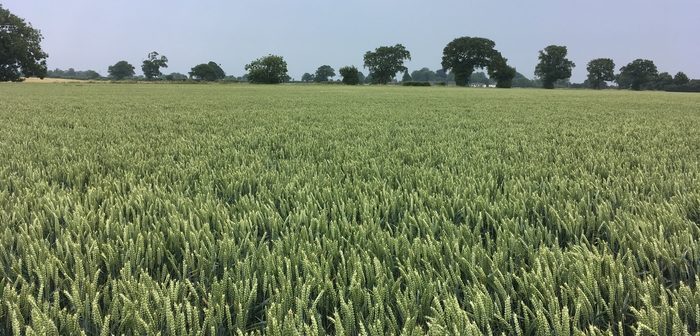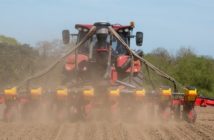Think carefully about seed rates when drilling wheat crops this autumn to avoid compromising yield potential, is the advice from breeders Limagrain UK.
Ron Granger, arable technical manager, acknowledges that getting seed rates right is complicated as it brings together a range of factors such as variety, drilling date, weather conditions, agronomic characteristics and importantly, experience of individual field performance.
“Get it right and there is the opportunity to fulfil that variety’s yield potential, but get it wrong and yield can be compromised from the very start.”
“It’s all about attention to detail and really understanding the variety and the conditions in which that variety will be grown.”
He says that this autumn we are looking at favourable establishment conditions. Where sowing conditions are optimal with good seed bed preparation and soil moisture, seed rates should be adjusted considerably as germination and plant establishment should not be compromised.
“And this does not necessarily mean increasing the seed rate.”
“Using high seed rates with very high tillering varieties can have a negative impact on standing power, disease resistance and specific weight. If plant canopies are too thick this will have implications on crop management.”
As breeders, Limagrain does the work to ensure growers know how a variety behaves agronomically, and it’s important to build this into the seed rate equation, he says.
“Varieties differ in their tillering ability in the winter as well as how they hold onto those tillers in the spring – and this will of course affect final yield.”
Limagrain seed rate trials carried out in 2018, Essex, show these differences.
The trial comprised of 5 different varieties, drilled on the 11th October 2017 at 3 different seed rates of; 200, 300 and 400 seeds/m2. (Apart from the seed rates, all other agronomic inputs where kept the same.)
“In what was a challenging year weather-wise, the results were surprising – it could be assumed that the higher seed rates would produce higher yields – but this was not necessarily the case”
“We found that a higher tillering variety like LG Sundance was highest yielding at the lowest seed rate of 200 seeds/m2, producing a yield at just over 10.60 t/ha. The yield potential dropped at higher seed rates, and this reflects the results we have seen with LG Sundance in previous seasons.”
“What this translates to on-farm, is that growers should consider lower seed rates if planting LG Sundance before mid-October, to maintain optimum yields from the start,” he says.
“Looking at LG Skyscraper, which we know has similar tillering and spring development to Evolution, it yielded best at 300 seeds/m2 with an excellent yield of over 11.50 t/ha.”
LG Jigsaw and LG Spotlight are high tillering varieties and again the data suggests that these varieties perform well at the lower seed rates – although the differences are subtle.
“But remember, lower seed rates will produce a crop that is easier to manage, and this should not be underestimated.”
Limagrain also carried out a similar seed rate trial in Glenrothes, Scotland to provide important regional data sets for LG Wheat varieties.
“Historically in the north, seed rates are higher to compensate for more erratic weather conditions. We wanted to investigate if this is still necessary and if there are sufficient yield benefits as ultimately, growers want crops that will not only yield, but are still standing at harvest.”
LG Skyscraper yielded a massive 13.4 t/ha when drilled at 300 seeds/m2. When drilled at 400 seeds/m2, this dropped to 12.3 t/ha – once again confirming that high seed rates don’t necessarily bring the highest yields.
This was also the case with varieties; LG Spotlight and LG Jigsaw which produced the highest yields at the lower seed rate of 300 seeds/m2, showing yield penalties at the higher seed rate of 400 seeds/m2.
“These are significant penalties in yield and support the theory that high seed rates are not always the best way of achieving high yield potential, but again growers have to weigh up the risk associated at the time of drilling to ensure good crop establishment,” says Mr Granger.
“Remember there is always some room for movement; wheat is a pretty robust crop and will produce more tillers if required, or drop tillers if the spring weather dictates, such as in a drought situation. But getting the seed rate as close to the optimum as possible gives your crop the best chance of achieving maximum yield potential, as well as making it easier to manage throughout the season.”




